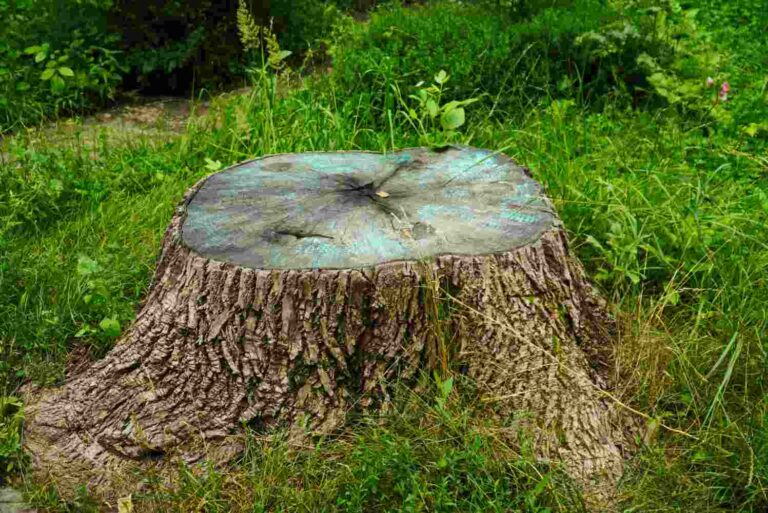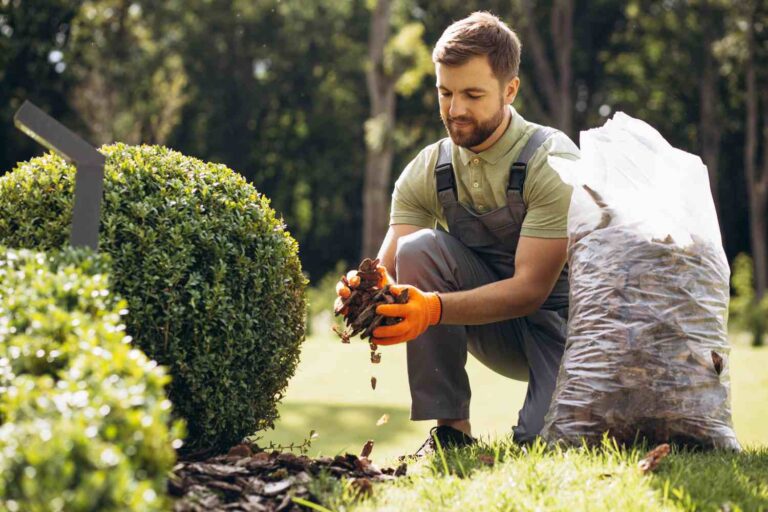- 17 September 2024
- 4 min read
How to remove a tree stump?

Table of contents
Is it easy to remove a tree stump?
Removing a tree stump is not typically an easy task and often requires considerable effort or specialized equipment. The difficulty largely depends on the stump’s size and the tree’s species, as denser woods are harder to remove. Manual methods, like digging out the stump with shovels and axes, are labor-intensive and time-consuming. Using a stump grinder, which can be rented from many hardware stores, provides a quicker and less laborious alternative, though it still requires handling heavy machinery.
Chemical removers offer a less physically demanding option, but they require a long waiting period for the stump to fully decompose, which can take several months. Burning is another method, though it’s not suitable for all locations due to fire regulations and safety concerns. Each method has its complexities and costs, so it’s important to choose one that aligns with your ability to invest time and resources into the project.
What tools are needed to remove a tree stump?
To remove a tree stump effectively, you’ll need a variety of tools depending on the chosen method. For mechanical removal, a stump grinder is the most efficient tool, though it can be rented if not available. For manual removal, essential tools include a chainsaw to reduce the stump’s height, a digging bar to loosen the soil around the stump, a shovel for removing dirt, and an axe or mattock to cut through roots. If opting for chemical removal, you’ll need a drill to create deep holes in the stump for applying the chemical stump remover. Safety equipment, like gloves and goggles, is crucial for all methods to ensure protection during the process.
Tree stump removal – how to do it?
To remove a tree stump, you have several effective methods at your disposal. The most direct approach is using a stump grinder, which mechanically shreds the stump into wood chips. This method is fast but requires either renting the equipment or hiring a professional. Alternatively, for a more hands-on approach, you can manually dig out the stump. Start by digging around the stump to expose the roots, then use a saw or an axe to sever them. Pull the stump from the ground with a winch or a truck, ensuring all safety measures are in place to prevent injury.
For a slower, less labor-intensive method, chemical stump removers are available. These products accelerate the decay of the stump. Drill holes into the stump, pour in the chemical, and wait for the stump to soften over time, which can then be broken apart more easily. Always wear protective gear and follow the manufacturer’s instructions when handling chemicals. Each method varies in effort, cost, and time, allowing you to choose based on your needs and capabilities.
Removing the tree stump yourself or is it better to use a company?
Removing a tree stump yourself can be daunting and labor-intensive, especially without access to professional tools. For those not experienced in operating heavy machinery, like a stump grinder, or handling potentially hazardous chemicals, it’s safer and more efficient to hire a professional tree removal company. These companies possess the expertise, equipment, and insurance to handle the job efficiently and safely. They can quickly assess the best method for removal based on the stump’s size, location, and type of tree, ensuring minimal impact on your property. Hiring professionals not only saves you time and physical effort but also mitigates the risk of personal injury or property damage, making it a wise decision for effective and hassle-free stump removal.
How to make use of the uprooted stump of a tree?
Once a tree stump has been uprooted, there are creative and practical ways to repurpose it, turning what might seem like waste into a valuable resource. One popular option is transforming the stump into a rustic garden planter. Hollow out the center and fill it with soil to plant flowers or herbs, creating a charming natural feature. The stump can also be carved into unique outdoor furniture, like a chair or table, adding an artistic touch to your garden.
Alternatively, the stump can be cut into slices to serve as natural stepping stones or decorative elements in your landscaping. For those who enjoy DIY projects, smaller pieces of the stump can be turned into coasters, candle holders, or even sculptural art pieces.
If you prefer a more functional approach, consider using the stump as a base for a bird bath or a feeder, integrating it seamlessly into the ecosystem of your backyard, while also attracting wildlife. Each of these uses not only recycles the stump but also enhances your outdoor space with a touch of nature’s resilience and beauty.
You might be interested in...
- Gardening advice

17 September 2024
Cost of revamping your garden
Revamping your garden in the UK can vary significantly in cost depending on the scope of the project, the materials used, and the complexity of the design. On average, basic garden improvements such as lawn re-turfing, planting new flowers, and adding a simple patio can cost between £1,000 and £5,000. For a more extensive garden makeover, including features like decking, water features, bespoke planting schemes, and outdoor lighting, costs can range from £5,000 to £15,000. High-end garden renovations, which might involve landscape design services, installation of premium materials, outdoor kitchens, or bespoke garden structures, can exceed £20,000.
- Building advice
- Gardening advice

17 September 2024
Using copper and zinc strips for moss control
Copper and zinc strips are effective methods for controlling moss growth on roofs. When rainwater interacts with these metals, it releases ions that inhibit moss development. Installing strips along the roof ridge allows these ions to wash down and protect the surface below. This method is eco-friendly and reduces the need for chemical treatments, making it a popular choice for long-term moss management.